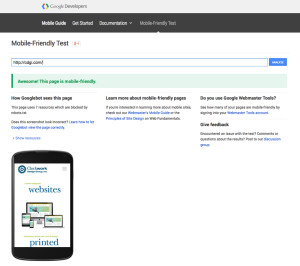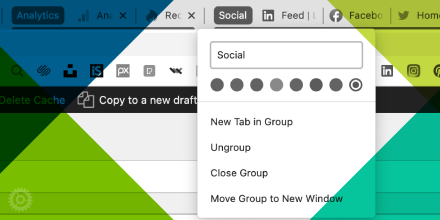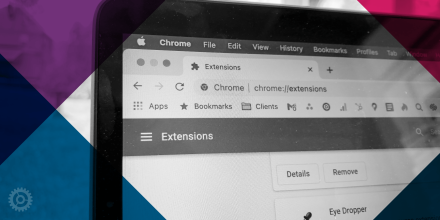

The answers to these three questions are:
1) What this means is that, among the many and varied ways Google reads and interprets your website, it will now also check to see if your site is friendly (i.e. compatible) with mobile devices such as smartphones and tablets. Obviously, sites that are compatible with these devices will tend to rank higher than those that are not. How heavily will that yes/no question play a part in search rankings is unknown – only Google’s super-secret search algorithms know for sure, and they are only slightly less complicated than a map of the human genome.
2) There’s an easy way to tell if your site is mobile-friendly or not. Go to Google’s Mobile-Friendly Test page, enter your website’s URL in the field, and click on the Analyze button. If you’re among the blessed, you should see something like this:
Yay! Our Clockwork website is (obviously…) a mobile-friendly site, and when Google next gets around to “indexing” our site, our SEO ranking will reflect positively for it. So they say. By the way, in reality the above test is actually on a page-by-page basis and only tests the page belonging to the URL you entered in the text field – not the entire website. But odds are good that if your homepage is mobile-friendly, a lot or most of your site is too. I base this conjecture on no research at all. But if you want to test my theory, enter any page’s URL after a successful test of the homepage in the Mobile-Friendly Test page and see if it, too, gets the thumbs-up from Google.
3) If the answer is “no” and you’re wondering what can be done about it, well, that’s where it gets a bit more difficult. There’s no hidden make-my-website-mobile-friendly button for you to click on, unfortunately. But there are certain graphic design agencies you can work with to help you convert – or better yet redesign – your website so Google and prospective clients see a good-looking site on phones and tablets. I’m just sayin’.




